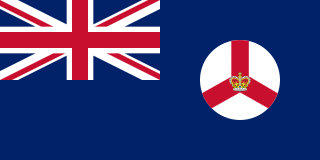 W
WThe Colony of Singapore was a British Crown colony that existed from 1946 and succeeded by the State of Singapore in 1959. When the Empire of Japan surrendered to the Allies at the end of World War II, Singapore was returned to the British in 1945. In 1946, the Straits Settlements were dissolved and together with Cocos-Keeling and Christmas Island, Singapore became a separate Crown colony. The colony was governed by the United Kingdom until it gained partial internal self-governance in 1955.
 W
WSingapore in the Straits Settlements refers to a period in the history of Singapore from 1826 to 1942, during which Singapore was part of the Straits Settlements together with Penang and Malacca. From 1830 to 1867, the Straits Settlements was a residency, or subdivision, of the Presidency of Bengal, in British India.
 W
WGeneral elections were held for the first time in Singapore on 20 March 1948, when six of the 22 seats on the Legislative Council became directly-elected. Voting was not compulsory and was restricted to British subjects, who constituted around 2% of the 940,000 population. Although various organisations called for a boycott of the elections, voter turnout was 63.1%.
 W
WGeneral elections were held in Singapore on 10 April 1951 to elect nine seats on the Legislative Council, up from six seats in the 1948 elections. A 32-day-long campaign period was scheduled, with nomination day on 8 March 1951. The result was a victory for the Progressive Party, which won six of the nine seats.
 W
WGeneral elections were held in Singapore on 2 April 1955 to elect the 25 elected seats in the Legislative Assembly. Nomination day was on 28 February 1955.
 W
WAlkaff Gardens was a Japanese-style park once located east of the Bidadari Cemetery from 1930 to 1964, on the present site of Cedar Girls' Secondary School at Bidadari, Singapore. In the 1930s, the park was a popular leisure destination for dating couples and families. It featured as its centrepiece an artificial lake, which was drained in 1964.
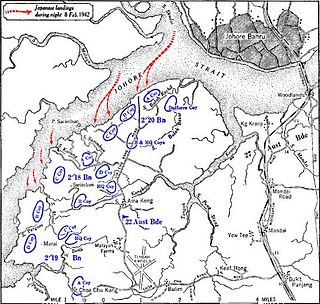 W
WThe Battle of Sarimbun Beach was the first stage of the Japanese assault on Singapore in February 1942 during World War II. Sarimbun Beach, located in the northwestern corner of mainland Singapore, was the area in which Japanese troops, under the overall direction of Lieutenant-General Tomoyuki Yamashita, first attacked Allied forces in Singapore. The overall commander of all Allied forces in Singapore, Lieutenant-General Arthur Percival, did not expect the Japanese to make their main attack on the island from the northwest and subsequently failed to reinforce the later-beleaguered Australian 22nd Brigade, which took the brunt of the Japanese assault. The main Japanese objective to be attained following their landing at Sarimbun Beach was the capture of Tengah Airfield.
 W
WThe Battle of Singapore, also known as the Fall of Singapore, was fought in the South-East Asian theatre of World War II when the Empire of Japan captured the British stronghold of Singapore—nicknamed the "Gibraltar of the East". Singapore was the major British military base in South-East Asia and was the key to British imperial interwar defence planning for South-East Asia and the South-West Pacific. The fighting in Singapore lasted from 8 to 15 February 1942. The Japanese victory was decisive, resulting in the Japanese capture of Singapore and the largest British surrender in history.
 W
WEdward Boustead (1800–1888) was an English businessman and philanthropist, who founded Boustead & Co and played an active role in the development of Singapore as a business and trading centre. Boustead was born in Yorkshire, England. He was the great-grandfather of actor David Niven.
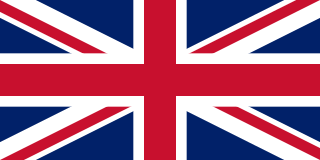 W
WThe British Military Administration (BMA) was the interim administrator of British Malaya from August 1945, the end of World War II, to the establishment of the Malayan Union in April 1946. The BMA was under the direct command of the Supreme Allied Commander South East Asia, Lord Louis Mountbatten. The administration had the dual function of maintaining basic subsistence during the period of reoccupation, and also of imposing the state structure upon which post-war imperial power would rest.
 W
WSingapore in the Straits Settlements refers to a period in the history of Singapore from 1826 to 1942, during which Singapore was part of the Straits Settlements together with Penang and Malacca. From 1830 to 1867, the Straits Settlements was a residency, or subdivision, of the Presidency of Bengal, in British India.
 W
WThe Battle of Bukit Timah, was part of the final stage of the Empire of Japan's invasion of Singapore during World War II.
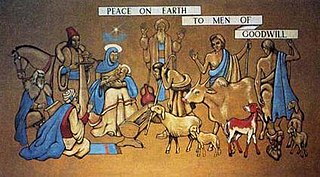 W
WThe Changi Murals are a set of five paintings of biblical theme painted by Stanley Warren, a British bombardier and prisoner-of-war (POW) interned at the Changi Prison, during the Japanese occupation of Singapore in World War II (WWII). His murals were completed under difficult conditions of sickness, limited materials and hardships. With a message of universal love and forgiveness, they helped to uplift the spirits of the POWs and sick when they sought refuge in the prison chapel.
 W
WChristmas Island, officially known as the Territory of Christmas Island, is an Australian external territory comprising the island of the same name. It is located in the Indian Ocean, around 350 kilometres (220 mi) south of Java and Sumatra and around 1,550 km (960 mi) north-west of the closest point on the Australian mainland. It lies 2,600 km (1,600 mi) northwest of Perth and 1,327 km (825 mi) south of Singapore. It has an area of 135 square kilometres (52 sq mi).
 W
WThe Territory of Cocos (Keeling) Islands is an Australian external territory in the Indian Ocean, comprising a small archipelago approximately midway between Australia and Sri Lanka and relatively close to the Indonesian island of Sumatra. The territory's dual name reflects that the islands have historically been known as either the Cocos Islands or the Keeling Islands.
 W
WGeorge Drumgoole Coleman, also known as George Drumgold Coleman, was an Irish civil architect who played an instrumental role in the design and construction of much of the civil infrastructure in early Singapore, after it was founded by Sir Stamford Raffles in 1819. Only a few of his buildings have survived in Singapore, most notably Armenian Church of Saint Gregory the Illuminator, Maxwell's House, and Caldwell House.
 W
WThe East India Company (EIC), also known as the Honourable East India Company (HEIC), East India Trading Company (EITC), the English East India Company or the British East India Company, and informally known as John Company, Company Bahadur, or simply The Company was an English, and later British, joint-stock company founded in 1600. It was formed to trade in the Indian Ocean region, initially with the East Indies, and later with Qing China. The company seized control of large parts of the Indian subcontinent, colonised parts of Southeast Asia and Hong Kong after the First Opium War, and maintained trading posts and colonies in the Persian Gulf Residencies.
 W
WFort Siloso is the sole restored coastal gun battery from the 12 such batteries which made up "Fortress Singapore" at the start of World War II. The fort is situated on Pulau Blakang Mati, an island south of mainland Singapore. The fort is now a military museum open to the public. The Surrender Chambers in Fort Siloso reopened in June 2017 with a refreshed exhibition and free admission.
 W
WThe Jackson Plan or Raffles Town Plan, an urban plan of 1822 titled "Plan of the Town of Singapore", is a proposed scheme for Singapore drawn up to maintain some order in the urban development of the fledgling but thriving colony founded just three years earlier. It was named after Lieutenant Philip Jackson, the colony's engineer and land surveyor tasked to oversee its physical development in accordance with the vision of Stamford Raffles for Singapore, hence it is also commonly called Raffles Town Plan. Raffles gave his instructions in November 1822, the plan was then drawn up in late 1822 or early 1823 and published in 1828. It is the earliest extant plan for the town of Singapore, but not an actual street map of Singapore as it existed in 1822 or 1827 since the plan is an idealised scheme of how Singapore may be organised that was not fully realised. Nevertheless, it served as a guide for the development of Singapore in its early days, and the effect of the general layout of the plan is still observable to this day.
 W
WOperation Jaywick was a special operation undertaken in World War II. In September 1943, 14 commandos and sailors from the Allied Z Special Unit raided Japanese shipping in Singapore Harbour, sinking six ships.
 W
WThe Kangchu system was a socio-economic system of organisation and administration developed by Chinese agricultural settlers in Johor during the 19th century. The settlers organised themselves into informal associations, and chose a leader from among themselves. In Chinese, "Kangchu" literally means ‘master of the riverbank’, and was the title given to the Chinese headmen of these river settlements. The "Kangchu" leaders are also called "Kapitan".
 W
WThe Kempeitai East District Branch was the headquarters of the Kempeitai, the Japanese military police, during the Japanese occupation of Singapore from 1942 to 1945. It was located at the old YMCA building, at the present site of Singapore's YMCA Building on Stamford Road. Opened in 1911, the distinctive Art Deco YMCA building was the site of interrogation and torture of many innocent civilians, including the war heroine Elizabeth Choy. After the war, the Singapore government erected several memorials with some at the former massacre sites. In 1995, the former site of the old YMCA building was gazetted by the National Heritage Board as one of the eleven World War II sites of Singapore.
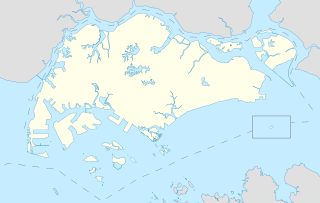 W
WThe Kenpeitai West District Branch was one of the branches of the Kenpeitai in Singapore besides the much noted Kenpeitai East District Branch during the Japanese occupation of Singapore from 1942 to 1945.
 W
WKent Ridge Park is a 47-hectare public park located in Kent Ridge, Singapore, between the National University of Singapore and the Singapore Science Park. Due to its undisturbed habitat and abundant plant life, it is a popular venue for bird-watchers and eco-tourists.
 W
WThe Legislative Council of the Colony of Singapore was a Legislative Council in Singapore that assisted the Governor in making laws in Singapore. It officially came into existence in 1946, when the Repeal Act of 1946 abolished the Straits Settlements, and Singapore became a Crown Colony on its own that would need its own Legislative Council. Based on existing systems already in place when the council operated under the Straits Settlements, it was partially opened for public voting in 1948, before being replaced by the Legislative Assembly in 1953.
 W
WThe Legislative Council of the Straits Settlements was a legislature formed on 1 April 1867, when the Straits Settlements was made a Crown colony. This allowed laws to be made swiftly and efficiently, as it was directly responsible to the Secretary of State for the Colonies in London, instead of being placed under a legislative hierarchy and answering to the Calcutta government based in India.
 W
WThe Governor of the Straits Settlements was appointed by the British East India Company until 1867, when the Straits Settlements became a crown colony. Thereafter the Governor was appointed by the Colonial Office. The position existed from 1826 to 1946. Between 1942 and 1945 the office was not filled, as the Straits Settlements was then under Japanese occupation. From the late 19th century onward, the Governor of the Straits Settlements was usually also British High Commissioner in Malaya and Brunei and British Agent for Sarawak and British North Borneo.
 W
WThe Malaya and British Borneo dollar was the currency of Malaya, Singapore, Sarawak, North Borneo, Brunei and Riau archipelago from 1953 to 1967 and was the successor of the Malayan dollar and Sarawak dollar, replacing them at par. The currency was issued by the Board of Commissioners of Currency, Malaya and British Borneo. Prior to 1952, the board was known as the Board of Commissioners of Currency, Malaya.
 W
WSir Thomas Stamford Bingley Raffles, FRS was a British statesman, Lieutenant-Governor of the Dutch East Indies (1811–1816), and Lieutenant-Governor of Bencoolen (1818–1824); best known for his founding of modern Singapore and the Straits Settlements.
 W
WThe Selarang Barracks incident, also known as the Barrack Square incident or the Selarang Square Squeeze, was a revolt of British and Australian prisoners-of-war (POWs) interned in a Japanese camp in Changi, Singapore.
 W
WThe self-governance of Singapore was carried out in several stages. Since the founding of Singapore in 1819, Singapore had been under the colonial rule of the United Kingdom. The first local elections on a limited scale for several positions in the government of Singapore started in 1948 following an amendment to the Constitution of Singapore.
 W
WThe Singapore Improvement Trust (SIT) is a former government organisation that was responsible for urban planning and urban renewal in Singapore. Formally established in 1927 under the Singapore Improvement Ordinance, it was modelled after similar organisations in India. The SIT initially carried out back lane improvement schemes and marking out unsanitary buildings for demolition, but began constructing public housing from 1935. After 1945, the SIT initially focused its efforts on the repair of its residential developments. It resumed constructing public housing in 1947 but was unable to keep up with demand. The SIT was also involved in the development of a "Master Plan", which set out Singapore's developmental direction, from 1952 to 1958. In the late 1950s, plans were set out to replace the SIT with two departments—housing and planning—culminating in two bills that were passed in 1959. With the establishment of the successor organisations by the government of Singapore, the Housing and Development Authority and the Planning Authority, in 1960, the SIT was dissolved.
 W
WThe 1915 Singapore Mutiny, also known as the 1915 Sepoy Mutiny or the Mutiny of the 5th Light Infantry, was a mutiny involving up to half of a regiment of 850 Indian Muslim sepoys against the British in Singapore during the First World War. The mutiny, on 15 February 1915, lasted nearly seven days. It resulted in the deaths of eight British officers and soldiers, two Malay officers and one soldier, 14 British civilians, five Chinese and Malay civilians and one German internee before it was finally quelled by British forces and Allied naval detachments.
 W
WThe Sook Ching was a systematic purge of perceived hostile elements among the Chinese Malayans and the Chinese in Singapore by the Japanese military during the Japanese occupation of Singapore and Malaya, after the British colony surrendered on 15 February 1942 following the Battle of Singapore. The purge took place from 18 February to 4 March 1942 at various places in the region. The operation was overseen by the Imperial Japanese Army's Kempeitai secret police and subsequently extended to include the Chinese population in Malaya.
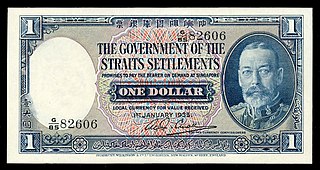 W
WThe Straits dollar was the currency of the Straits Settlements from 1898 until 1939. At the same time, it was also used in the Federated Malay States, the Unfederated Malay States, Kingdom of Sarawak, Brunei, and British North Borneo.
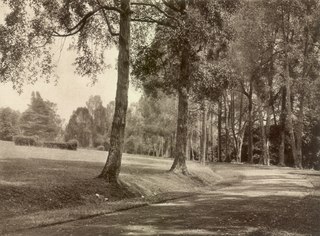 W
WTyersall Park is a historical estate in Singapore, bound by Holland Road and Tyersall Avenue, near the Singapore Botanic Gardens. It was private land belonging to the Malaysian state of Johor from 1862. Some portions of it had been acquired by the Government of Singapore in 1990 and in 2009 respectively. The property is restricted from the public and is fenced along Tyersall Avenue.